West Virginia's State Symbols
Tap each card to learn more about each of West Virginia's State Symbols.
Government Symbols
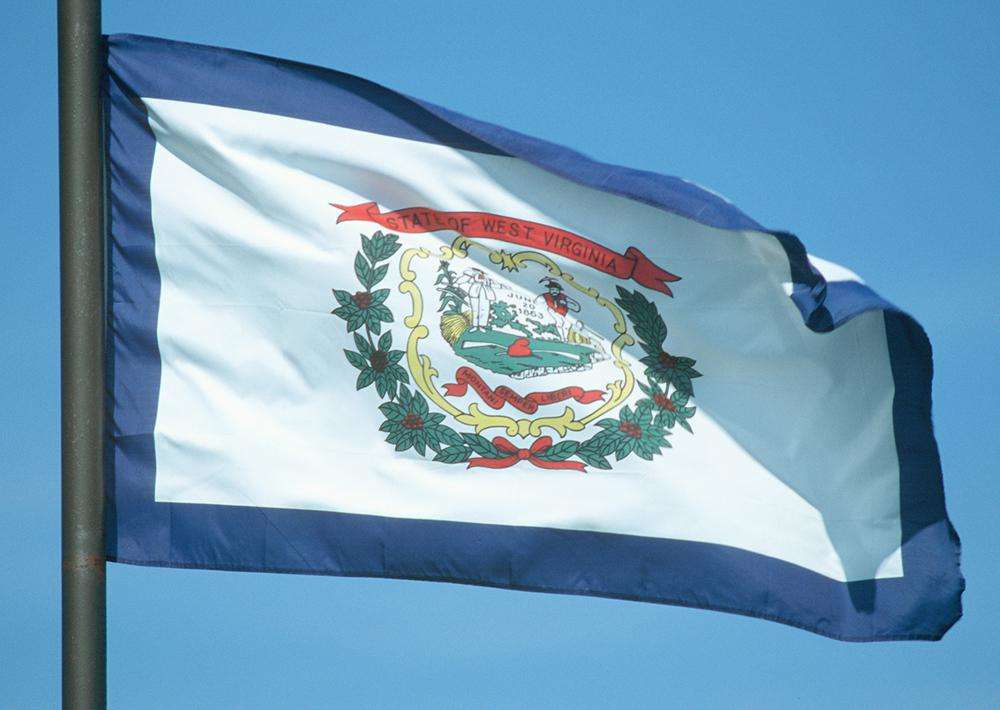
State Flag
The State Flag of West Virginia was adopted by the Legislature on March 7, 1929.
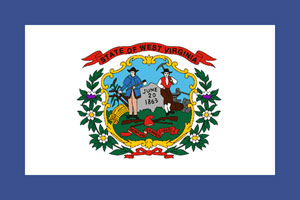
State Flag
The design of the State Flag features West Virginia's coat-of-arms emblazoned in proper colors at the center of a pure white field. A red banner that reads, "State of West Virginia" appears above the coat-of-arms and another red banner bearing the state motto appears toward the bottom. Wreathed around the coat-of-arms are Rhododendron in proper colors. The pure white field is bordered on all four sides by a strip of blue.
Learn more at: e-WV:State Flag and WV Blue Book 2017-2018.
Did You Know?
For parade purposes, all sides (except for the staff side) of the State Flag are to be trimmed with gold fringe.
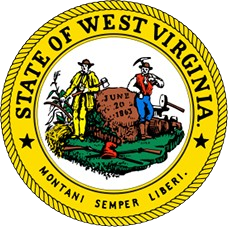
State Seal
The Official Seal of West Virginia was adopted on September 26, 1863.
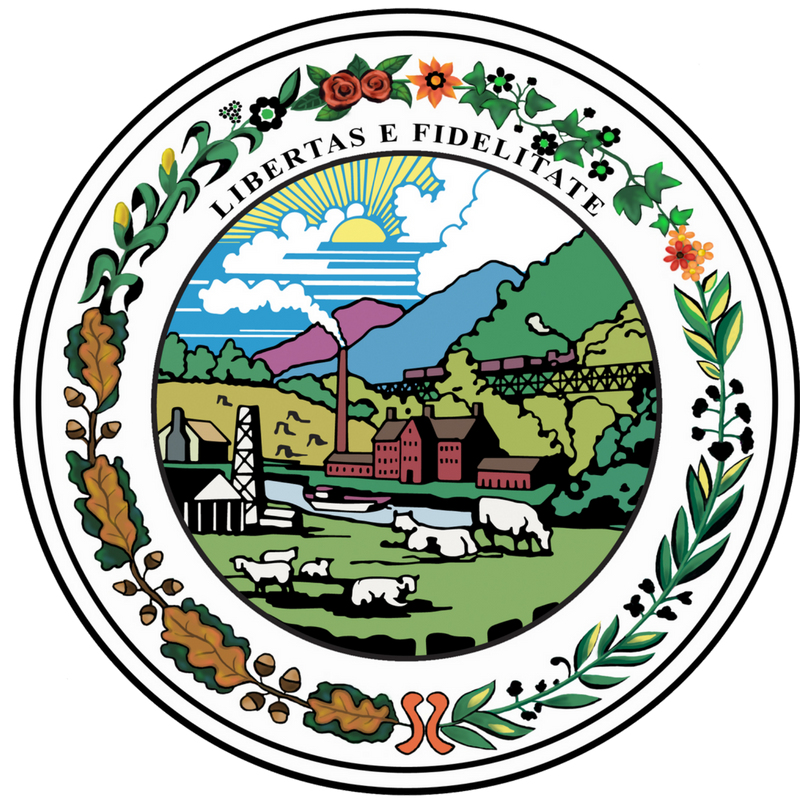
State Seal
The State Seal of West Virginia was designed by Joseph H. Diss Debar of Doddridge County. The obversefront side of the Great Seal symbolizes the principal pursuits and resources of West Virginia. A farmer and miner stand on either side a large ivy-covered stone bearing the date of West Virginia's admission to the Union. A Phyrgian cap, or "Cap of Liberty," rests on two hunters' rifles in front of the stone. State of West Virginia and the Latin motto,Montani Semper Liberi are also featured on this side.
The reverse side serves as the Governor's official seal, though it is not commonly used. It depicts laurel and oak leaves, a log farmhouse, hills, factories, and boats.
Learn more at: e-WV:State Seal and WV Blue Book 2017-2018.
Did You Know?
The Secretary of State serves as the "keeper of the seal" and controls the use of the seal for any purpose other than official state business.
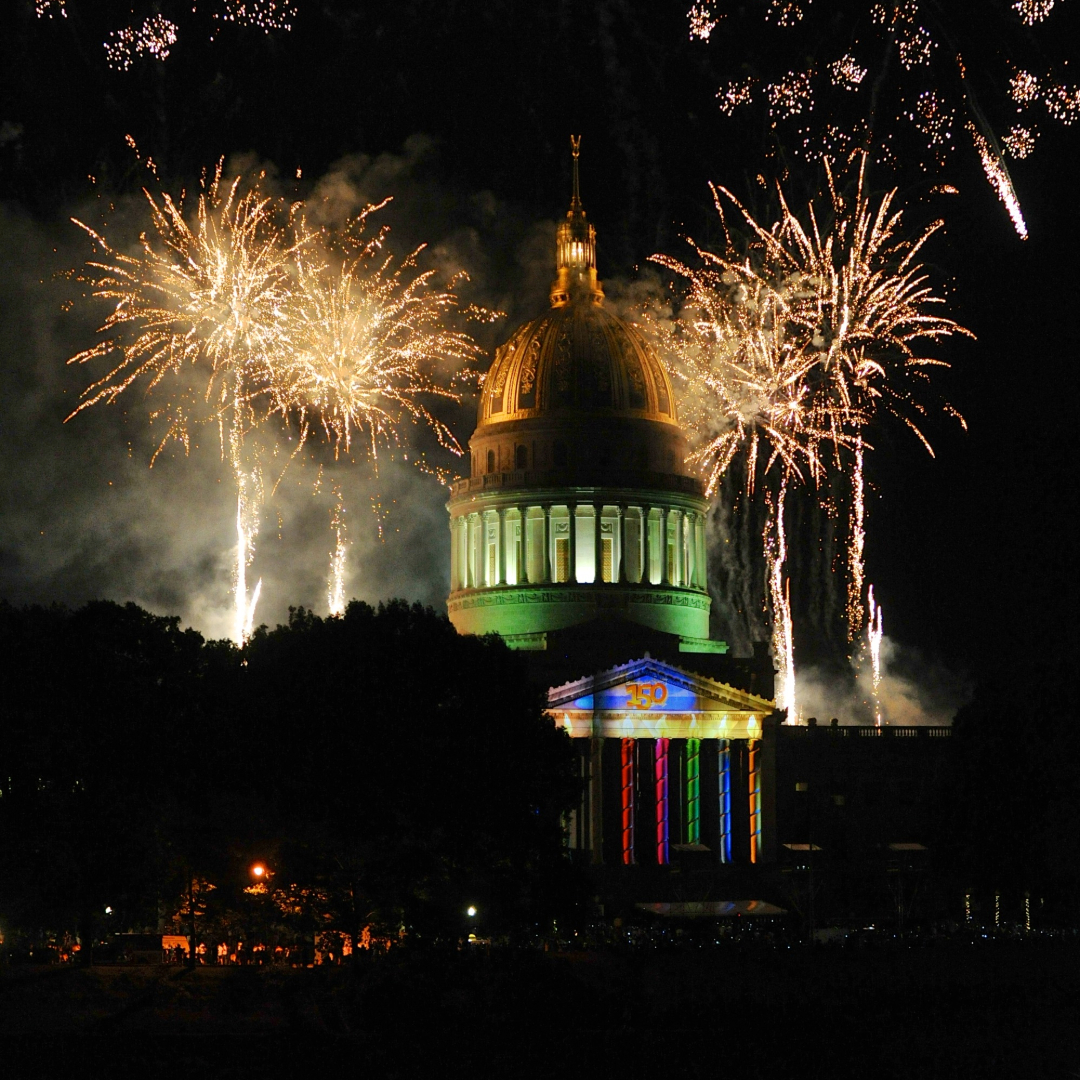
West Virginia Day
June 20th was declared a legal holiday in the state of West Virginia in 1929.

West Virginia Day
The state of West Virginia was proclaimed the 35th state of the United States of America by President Abraham Lincoln on April 20, 1863. The proclamation became effective 60 days later on June 20, 1863, thus why West Virginia Day is celebrated on June 20th each year. West Virginia Day was officially declared as a state holiday by Chapter 59, Acts of the Legislature, Regular Session in 1927.
Learn more at: e-WV:West Virginia Day and WV Blue Book 2017-2018.
Did You Know?
President Abraham Lincoln approved the Statehood Bill for West Virginia on the condition that it would gradually abolish slavery.

State Colors
Old Gold and Blue, the official colors of West Virginia were adopted on March 8, 1963.

State Colors
The official colors of West Virginia are known as Old Gold and Blue and were designated as the State Colors by Senate Concurrent Resolution No. 20 and adopted by the Legislature on March 8, 1963.
Learn more at: e-WV:State Colors and WV Blue Book 2017-2018.
Did You Know?
Before their official status, blue and gold were often used by the state in ceremonies since they are the official colors of West Virginia University.
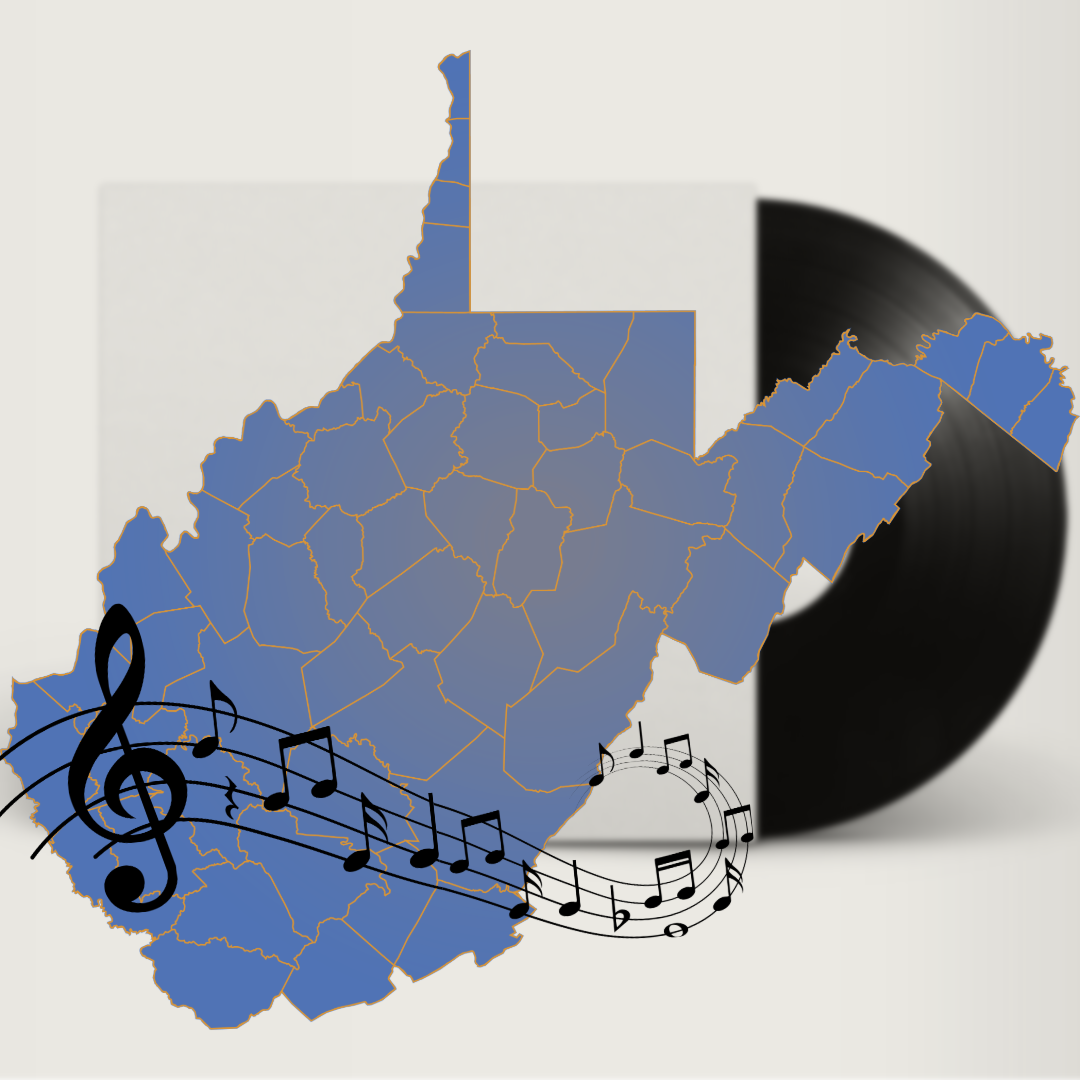
State Songs
There are 4 official state songs. 3 were adopted on February 28, 1963. The fourth was added on March 8, 2014.
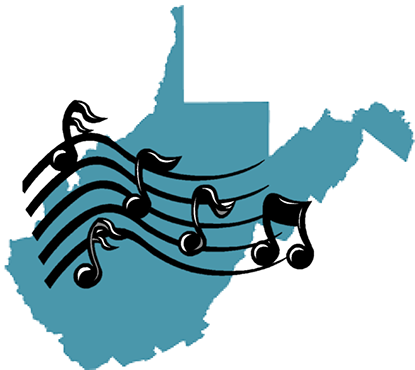
State Songs
West Virginia has four official State Songs. Each ranks equally with the others in its official status. House Concurrent Resolution No. 19 adopted by the Legislature on February 28, 1963 named The West Virginia Hills, This Is My West Virginia, and West Virginia, My Home Sweet Home as official state songs. House Concurrent Resolution No. 40 was adopted by the Legislature on March 8, 2014 and designated Take Me Home, Country Roads as an additional official state song.
Learn more at WV Blue Book 2017-2018 and e-WV:The West Virginia Hills, e-WV: Country Roads, Goldenseal Excerpt: West Virginia's Three State Songs, and WV Archives and History: West Virginia State Songs.
Did You Know?
The West Virginia Hills is the oldest of the four State Songs. The four-verse poem was published in September 1885 in the Glenville Crescent newspaper and credited to Ellen Ruddell King.

State Motto
Montani Semper Liberi was adopted as the official State Motto in 1872 as part of the state constitution.

State Motto
Montani Semper Liberi is Latin for "Mountaineers are Always Free," and was adopted as the official State Motto in Article II, Section 2-7 of the state constitution signed in 1872. The article specifically states: "The present seal of the state, with its motto, "Montani Semper Liberi," shall be the great seal of the State of West Virginia, and shall be kept by the secretary of state, to be used officially, as directed by law."
Learn more at WV Blue Book 2017-2018 and e-WV:Montani Semper Liberi.
Did You Know?
The phrase was suggested by Joseph H. Diss Debar, the Doddridge County artist who created the State Seal.
Flora and Fauna Symbols
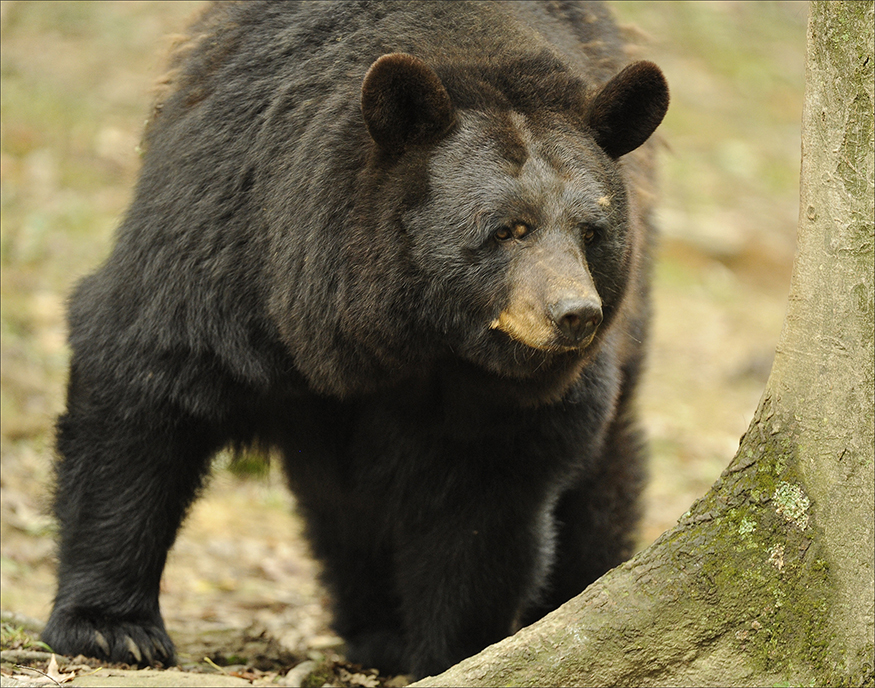
State Animal
The black bear became the official State Animal of West Virginia in 1973.
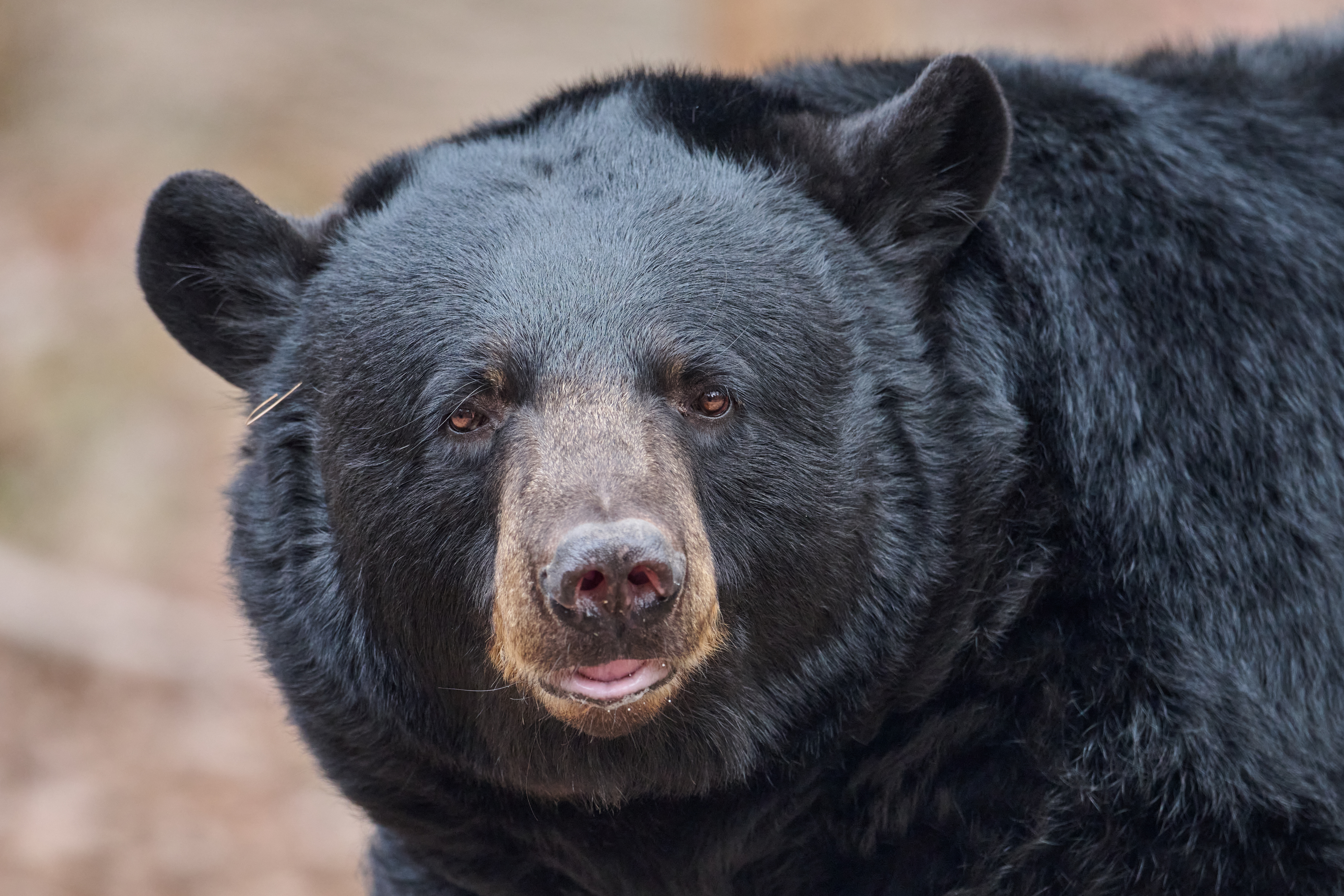
State Animal
West Virginia students, teachers, and sportsmen helped to select the official State Animal by completing a poll by the Division of Natural Resources in 1954-1955. The black bear (Ursus americanus) was officially adopted as the official State Animal by the Legislature in 1973 when House Concurrent Resolution 6 was approved.
Learn more about the black bear at:e-WV:Black Bear
Did You Know?
Black bears are the only species of bear found in West Virginia and although they're commonly known as "black bears," their coloring is actually a deep tint of brown! Adult black bears reach an average weight of 250 pounds.
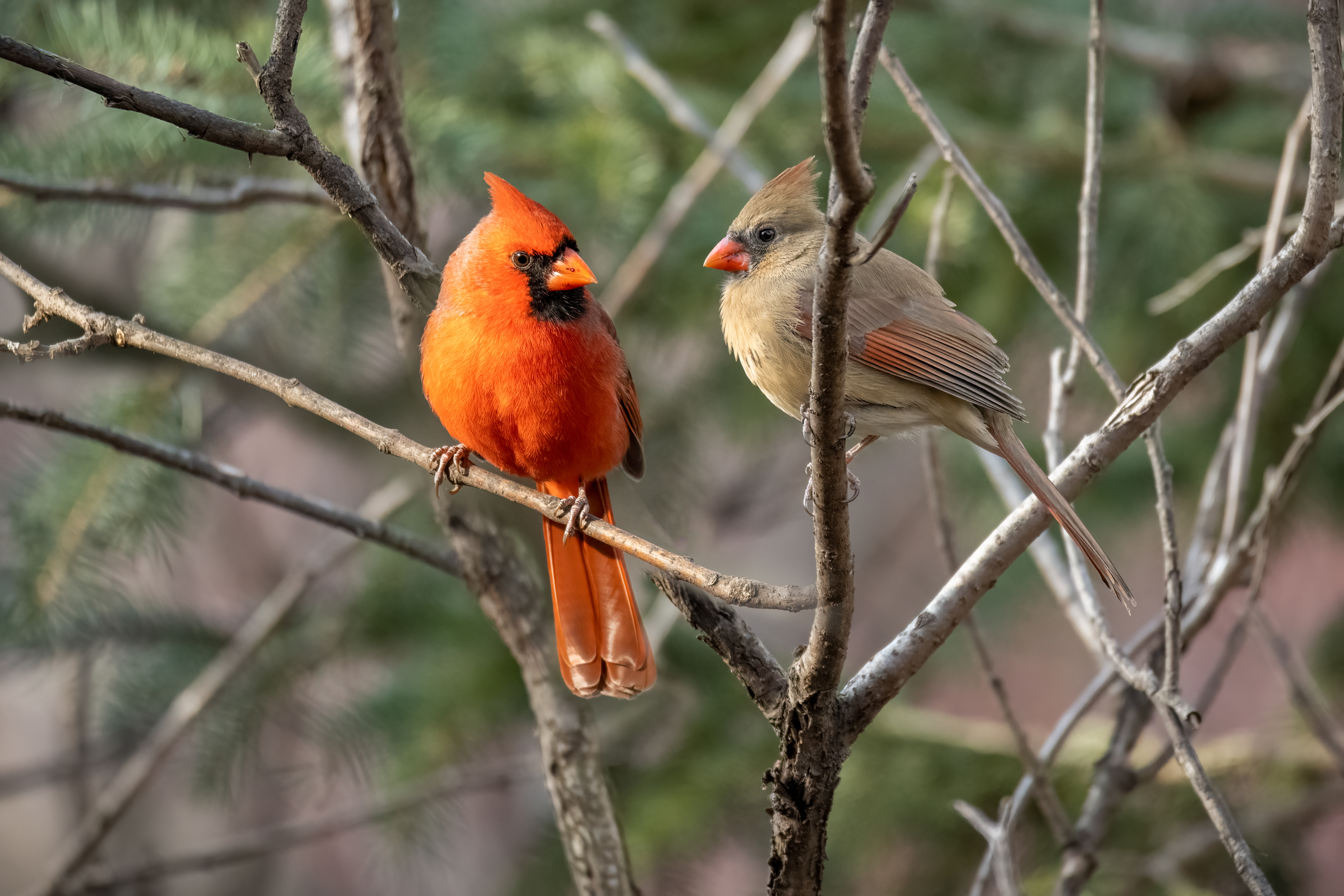
State Bird
The Northern Red Cardinal was adopted as the State Bird on March 7, 1949.
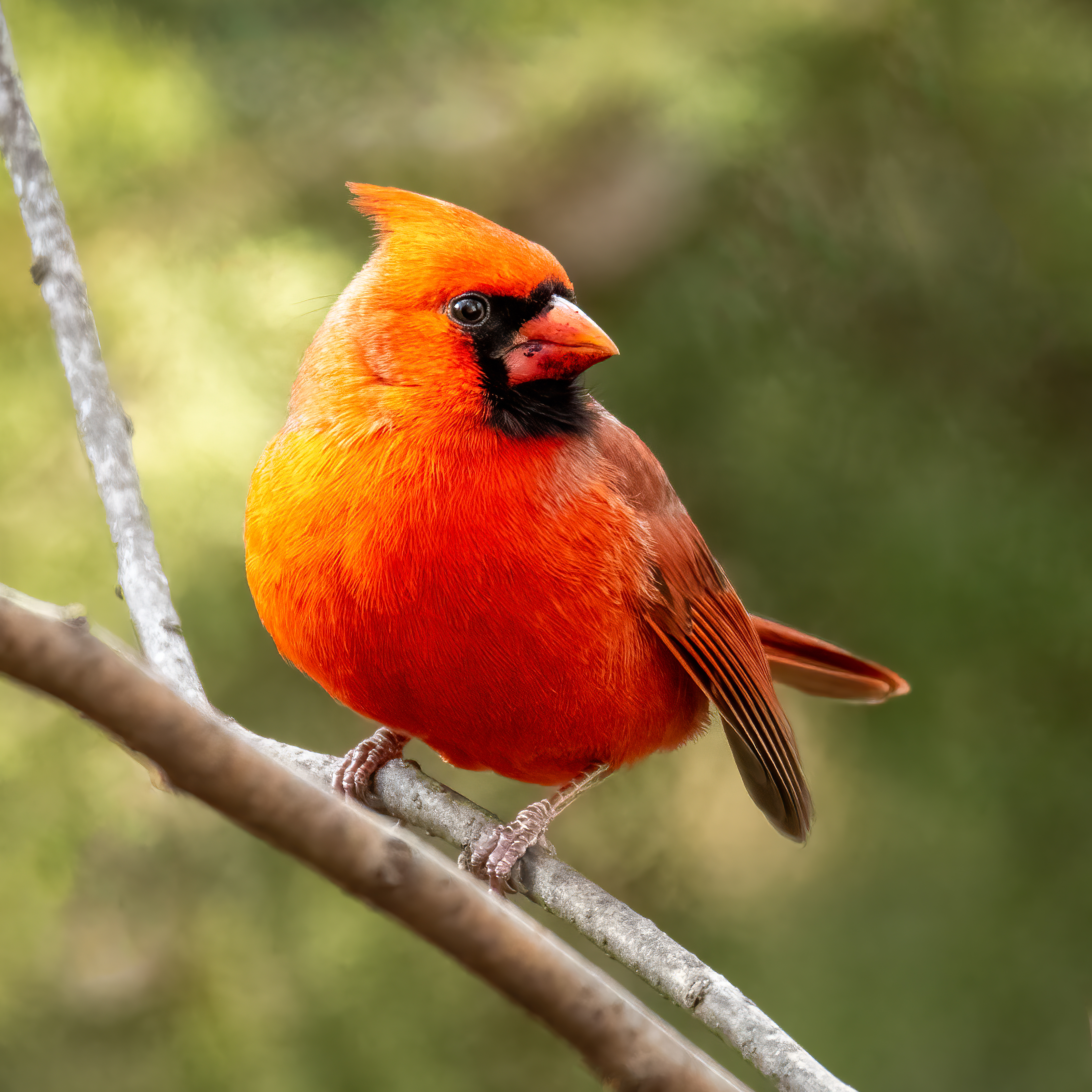
State Bird
On March 7, 1949, the Legislature adopted both the official State Bird and State Tree by conducting a vote. West Virginia public school students and civic organizations voted to select the State Bird. The Northern Red Cardinal (Cardinali cardinali) won by more than 11,000 votes.
Learn more about the cardinal at: All About Birds Northern Cardinal Identification.
Did You Know?
Only adult male cardinals have the rich scarlet coloring and black mask around their beaks. Female and young cardinals are less brilliantly colored, though still have tinges of the distinctive red coloring.
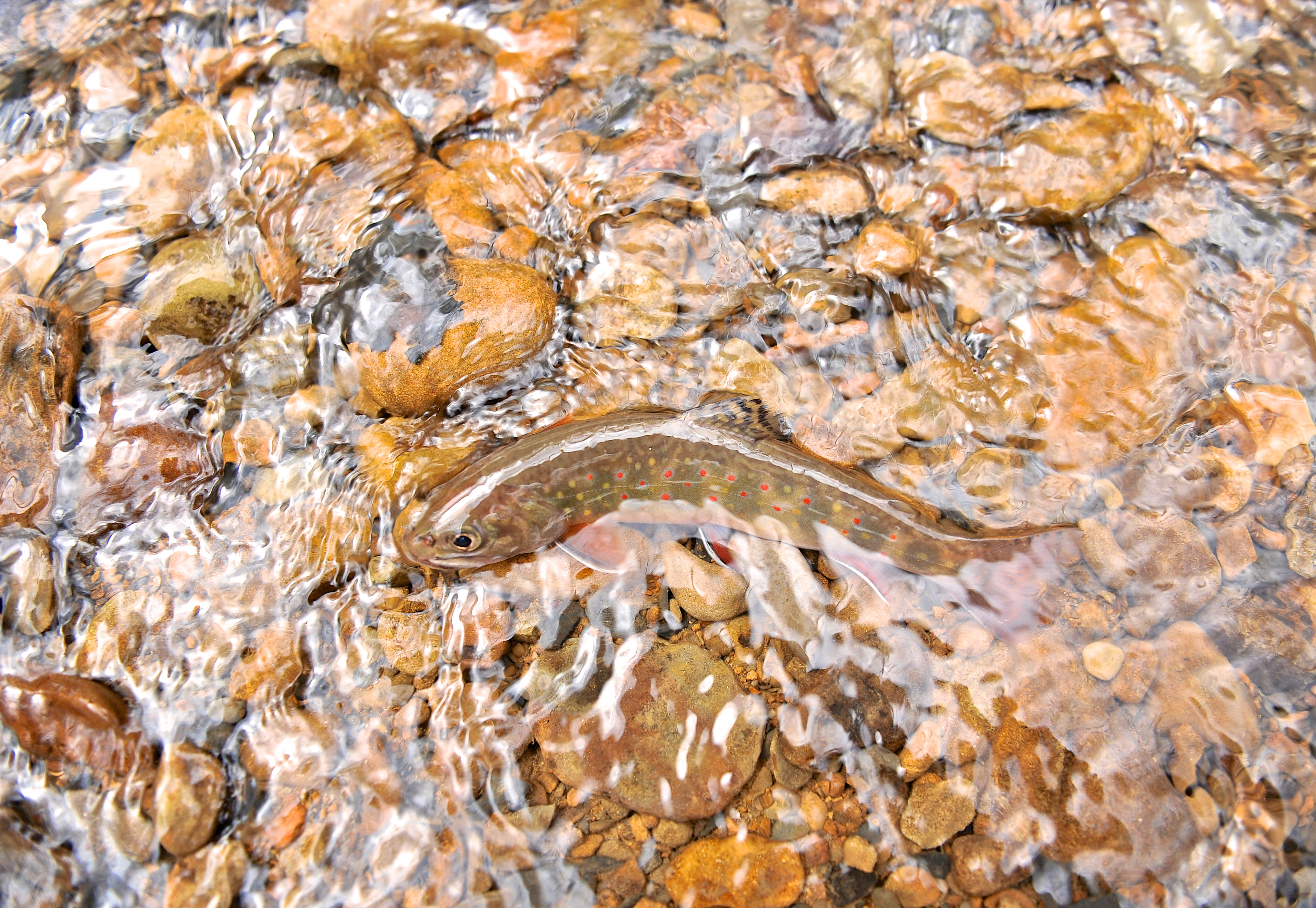
State Fish
The Brook Trout was recognized as the State Fish of West Virginia in 1973.
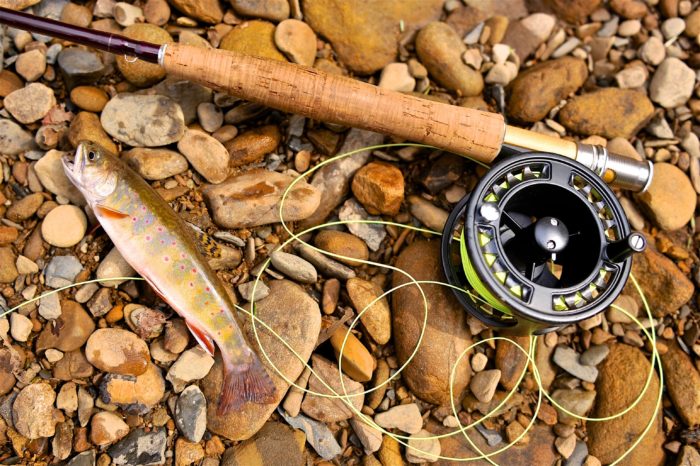
State Fish
The Brook Trout (Salvelinus fontinalis) is West Virginia's only native species of trout. The Legislature recognized it as the official State Fish by House Concurrent Resolution No. 6 adopted during the Regular Session in 1973. This native fish thrives in small, cold, spring-fed streams. The brook trout is olive in color and have a reddish belly (males) and can be easily identified by the light-colored edges of its lower fins.
Learn more about the brook trout at: WV Department of Natural Resources (DNR)| Brook Trout
Did You Know?
Brook Trout are also known as specks, brook char, and speckled trout.
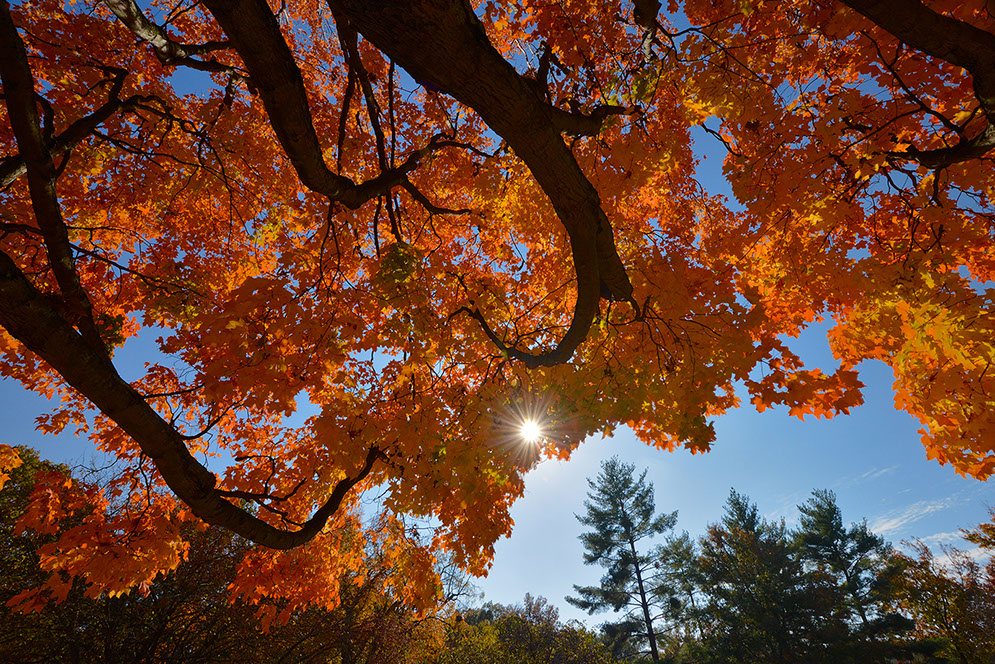
State Tree
The Sugar Maple became the State Tree of West Virginia on March 7, 1949.
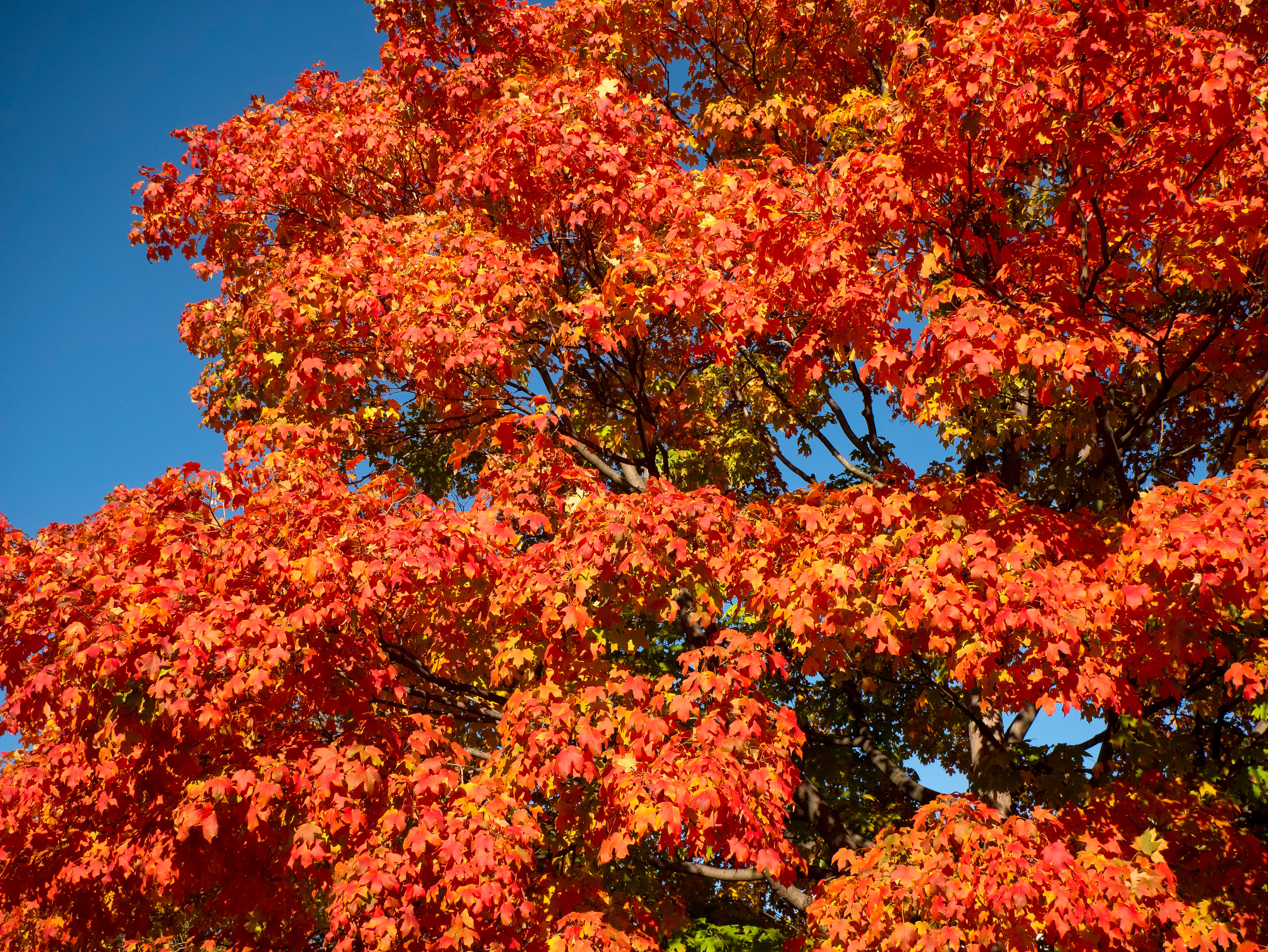
State Tree
West Virginia designated the Sugar Maple (Acer saccharum) as its State Tree along with the designation of the Northern Red Cardinal as the State Bird through the adoption of House Concurrent Resolution 12 on March 7, 1949. Like the State Bird, public school students and civic organizations voted to name the State Tree. Sugar maples have 5-lobed leafs and a source of timber and maple syrup. In the fall, the sugar maple's brilliant and beautiful fall foliage can be seen in all 55 West Virginia counties.
Learn more about the sugar maples at: e-WV: Sugar Maple and Marshall University Arboretum Project
Did You Know?
A sugar maple tree in Bethany, WV was once considered the world's largest living sugar maple at 5.6 feet in diameter and 110 feet tall.
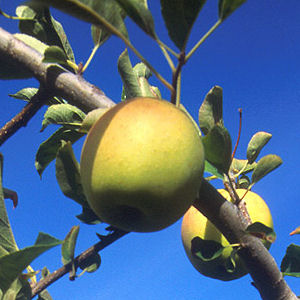
State Fruit
The Golden Delicious Apple was adopted as the official State Fruit on February 20, 1995.
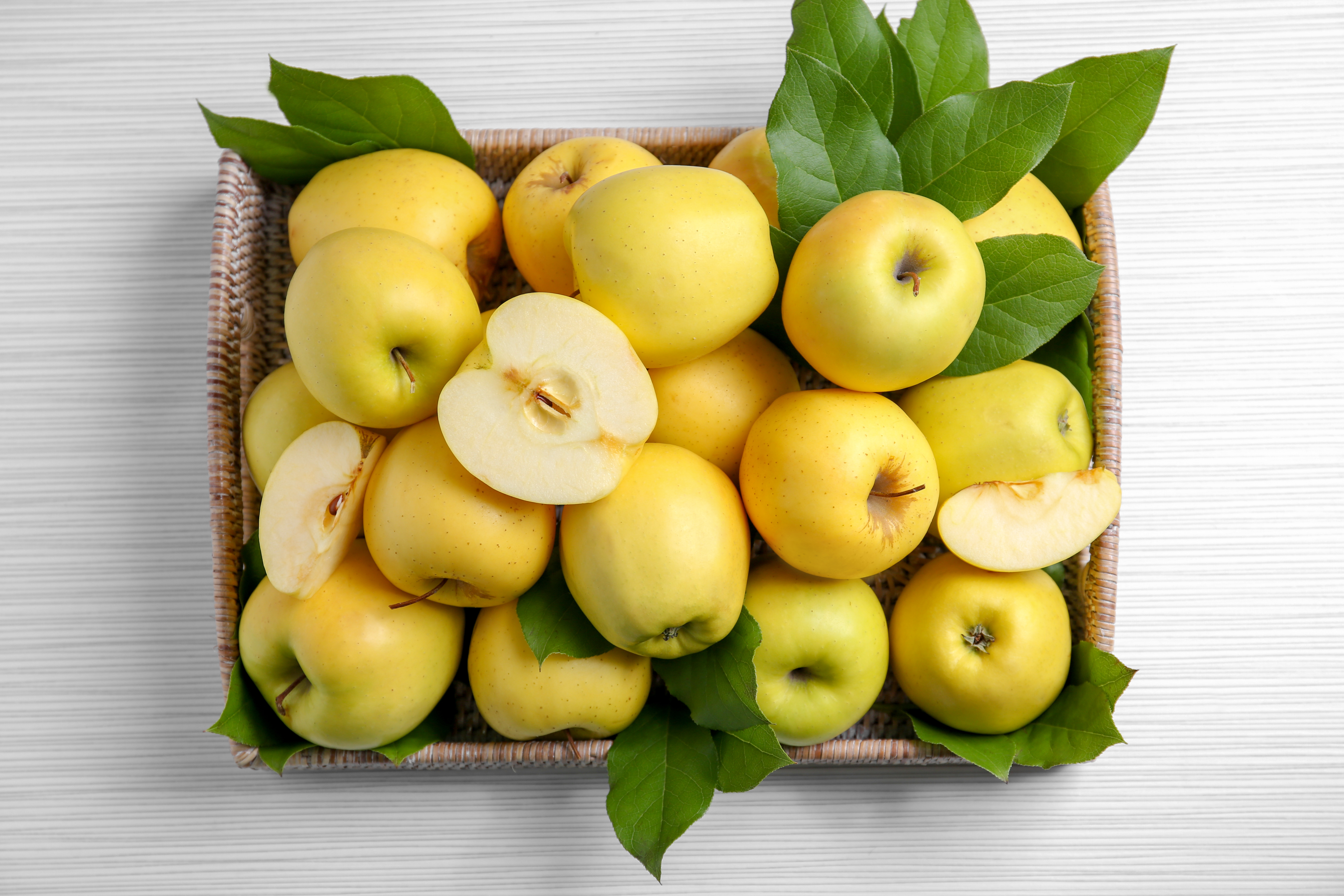
State Fruit
The Golden Delicious Apple (Malus domestica) was discovered by Anderson Mullins in Clay County in 1905. It was named the official State Fruit by Senate Concurrent Resolution No. 7, which was adopted by the Legislature on February 20, 1995. The Golden Delicious Apple replaced the plain apple as the official state fruit that had been adopted earlier in March of 1972.
Learn more at e-WV: Golden Delicious.
Did You Know?
The Golden Delicious Apple is West Virginia's second major horticultural contribution to the commercial apple industry. The first was the Grimes Golden Apple, which was discovered on the farm of Thomas Grimes near Wellsburg in the early 1800s.
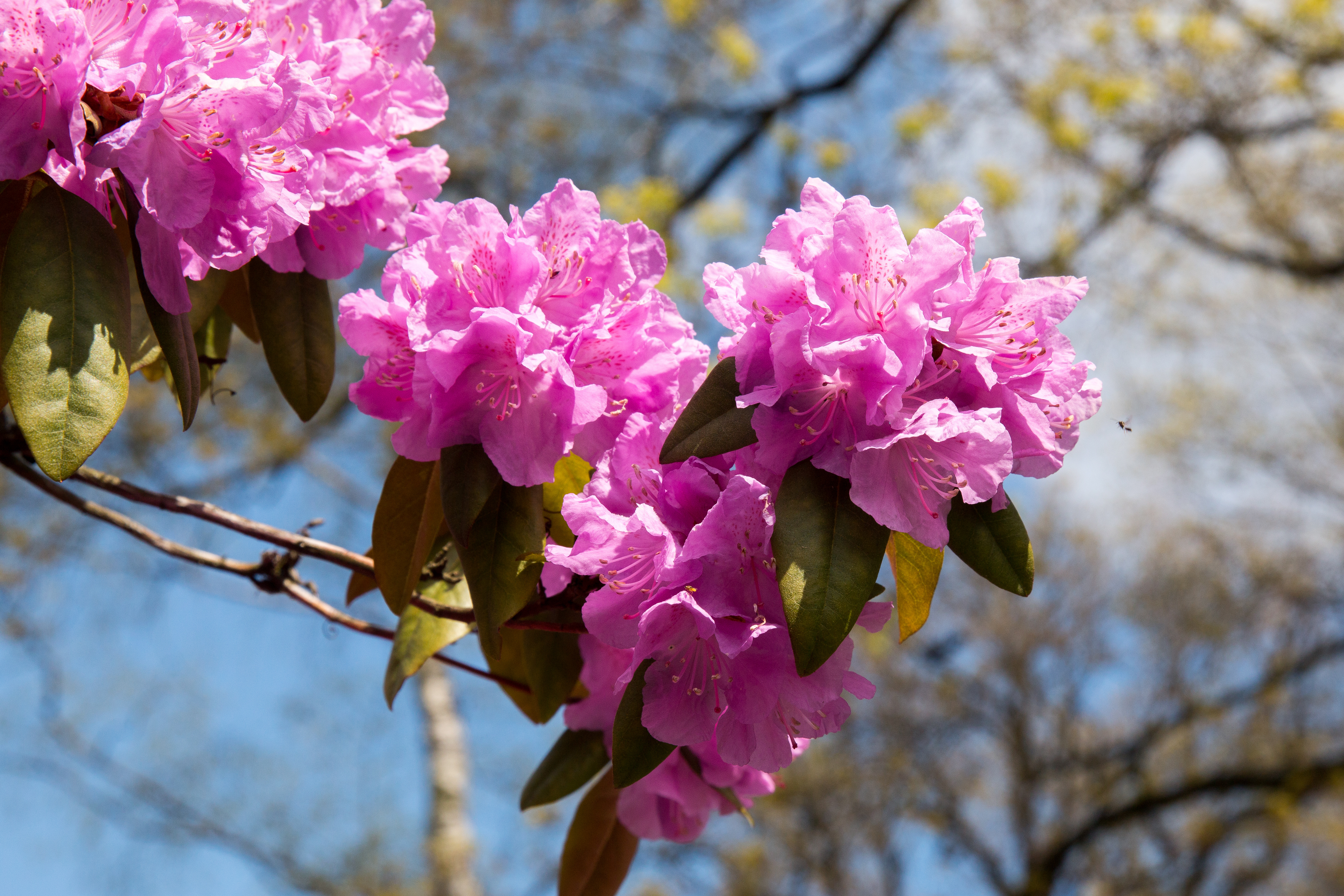
State Flower
The Rhododendron maximum or "Big Laurel" became the State Flower on January 29, 1903.
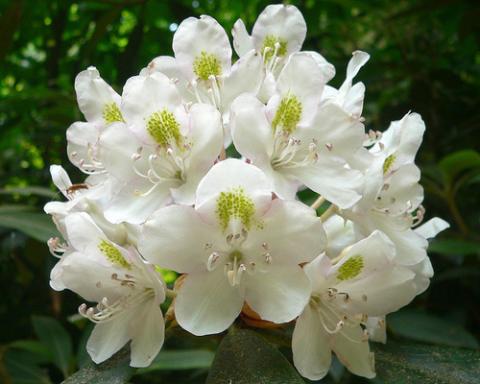
State Flower
The Rhododendron maximum or "Big Laurel" became the official State Flower of West Virginia by House Joint Resolution No.19 which was adopted by the Legislature on January 29, 1903 with recommendation from the Governor and a vote by public school students. The rhododendron is a shrub that belongs to the heath family and is known for its large evergreen leaves and delicate pale pink or white bloom, mottled with either red or yellow flecks. Other names for the rhododendron maximum include big laurel and rosebay. The rosebay alternates growth years with blooming years. You can find rhododendron in the United States throughout the eastern and Midwestern states. It is common in much of West Virginia and produce a spectacular show when in full bloom.
Learn more at e-WV: Rhododendron.
Did You Know?
There are over 800 species of rhododendron throughout the world! The most abundant are the purple (Catawba) rhododendron and rhododendron maximum.

State Insect
The honey bee was declared the State Insect on March 7, 2002.
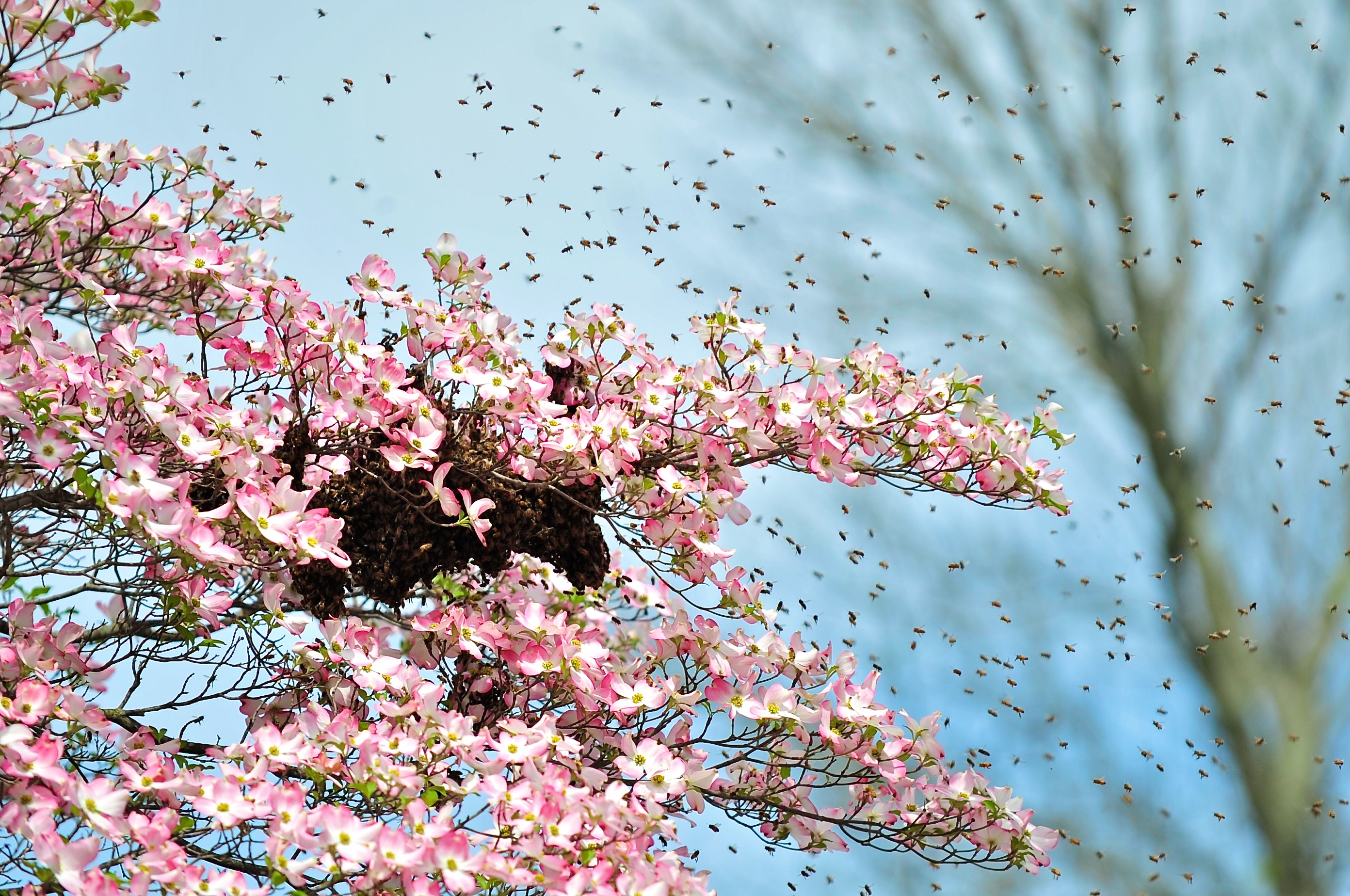
State Insect
The honey bee (Apis mellifera) became the official insect of West Virginia by Senate Concurrent Resolution No. 9, which was adopted by the Legislature on March 7, 2002. In addition to the flavorful honey produced by the honey bee, it pollinates many of the state's most important crops, including fruits, vegetables, and grasses. The honey bee has six legs, four wings, and its coloring ranges from dark yellow to gold with three dark bands on its abdomen.
Learn more at e-WV: Insects of West Virginia and SCR No. 9 Text.
Did You Know?
The honey bee produces more benefit to the West Virginia's economy than any other insect!
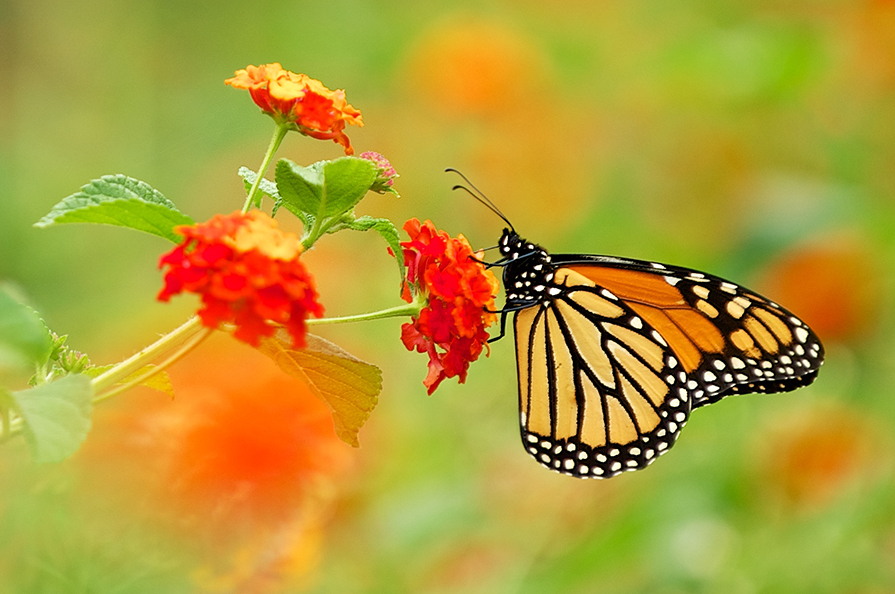
State Butterfly
The Monarch Butterfly was adopted as the State Butterfly on March 1, 1995.

State Butterfly
Senate Concurrent Resolution No. 11 was adopted by the Legislature on March 1, 1995 and named the monarch butterfly (Danaus plexippus) as the official butterfly of West Virginia. The orange and black insect dines on milkweed as a caterpillar, sips nectar from flowers as a butterfly, and migrates south to Mexico at the end of summer.
Learn more at WV Blue Book 2017-2018 and WVDNR | Monarch Butterfly.
Did You Know?
The butterflies that you see in spring are the great grandchildren of the ones that lived in Mexico during the winter!
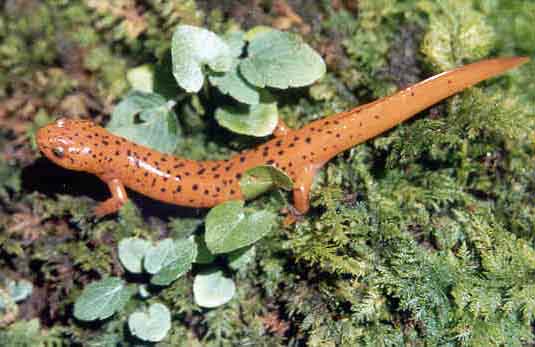
State Amphibian
On March 12, 2015, the Northern Red Salamander was named as the official State Amphibian.

State Amphibian
The Northern Red Salamander (Pseudotriton ruber) was named the State Amphibian in 2015 by House Concurrent Resolution No. 31. The resolution was proposed by eighth grade students taking the West Virginia Studies class at Romney Middle School. They proposed that the color pattern of the amphibian showcases the colorful fall foliage of the state, especially that of the Sugar Maple, and the peppered black dots represent the coal mines that dot the region. The five toes on each back foot represent the 55 counties and four toes on each front foot represent the eight major rivers of West Virginia.
Learn more at WV Blue Book 2017-2018 and e-WV: Amphibians and Reptiles.
Did You Know?
Northern red salamanders can be found throughout West Virginia.
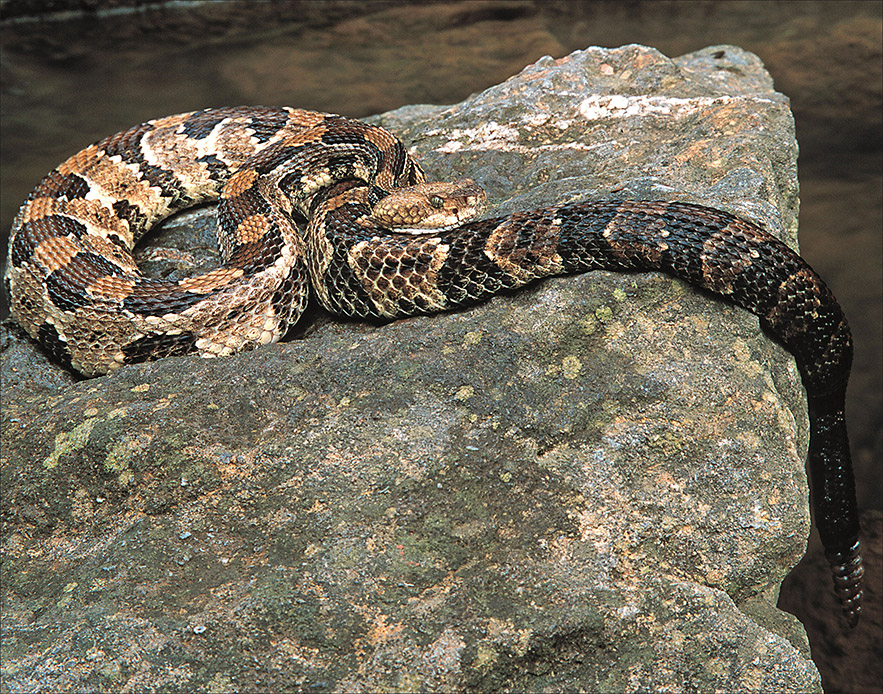
State Reptile
The Timber Rattlesnake was named the State Reptile on March 8, 2008.
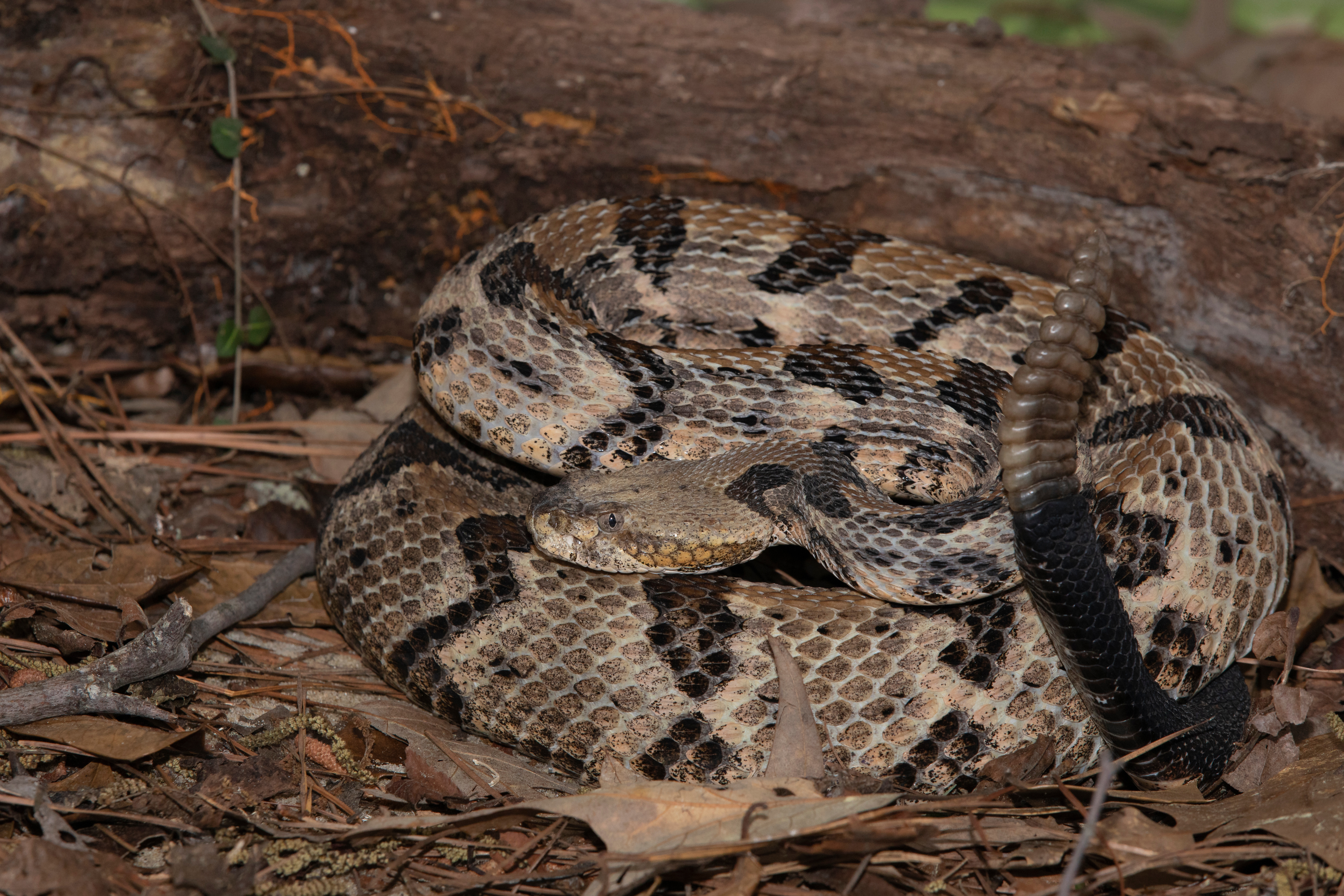
State Reptile
The Timber Rattlesnake (Crotalus horridus) was named the State Reptile in 2008 by Senate Concurrent Resolution No. 29, which was adopted by the Legislature on March 8, 2008. The timber rattlesnake has brown or black chevron-shaped markings down its back. The text of SCR No. 29 described this pattern as, "reminiscent of West Virginia's fauna and flora." Timber rattlesnakes are venomous, though usually docile and usually found in remote, rocky, mountainous sections of the state.
Learn more at WV Blue Book 2017-2018 and e-WV:Snakes.
Did You Know?
The timber rattlesnake is the only species of snake in West Virginia that has a segmented rattle at the end of its tail. It is one of the only two poisonous snakes in West Virginia. The other poisonous snake in the state is the copperhead. Both copperheads and timber rattlers are pit vipers.
Geological Symbols
State Soil
Monongahela Silt Loam was named the official soil of West Virginia on April 2, 1997.
State Soil
Monongahela silt loam was named the State Soil of West Virginia on April 2, 1997 when the Legislature adopted Senate Concurrent Resolution No. 5. Monongahela silt loam is used extensively for crops, hay, pasture, woodland, housing, and prime farmland.
Learn more at WV Blue Book 2017-2018, Soil Science Society of America: WV State Soil Booklet and e-WV: Monongahela Silt Loam.
Did You Know?
Monongahela silt loam covers over 100,000 acres in 42 counties throughout West Virginia.
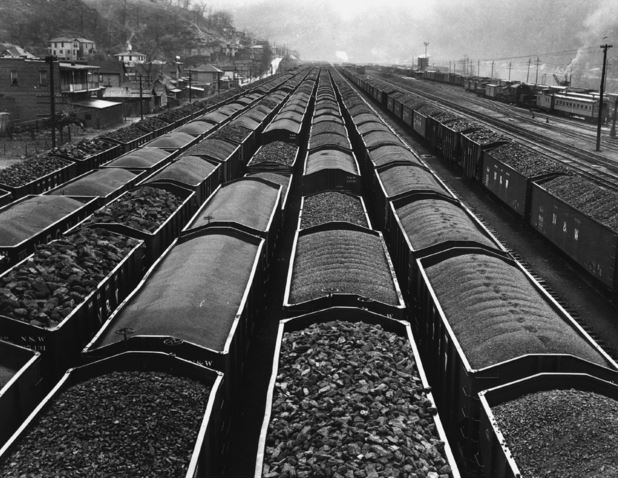
State Rock
Bituminous coal was declared the official State Rock of West Virginia on April 11, 2009.
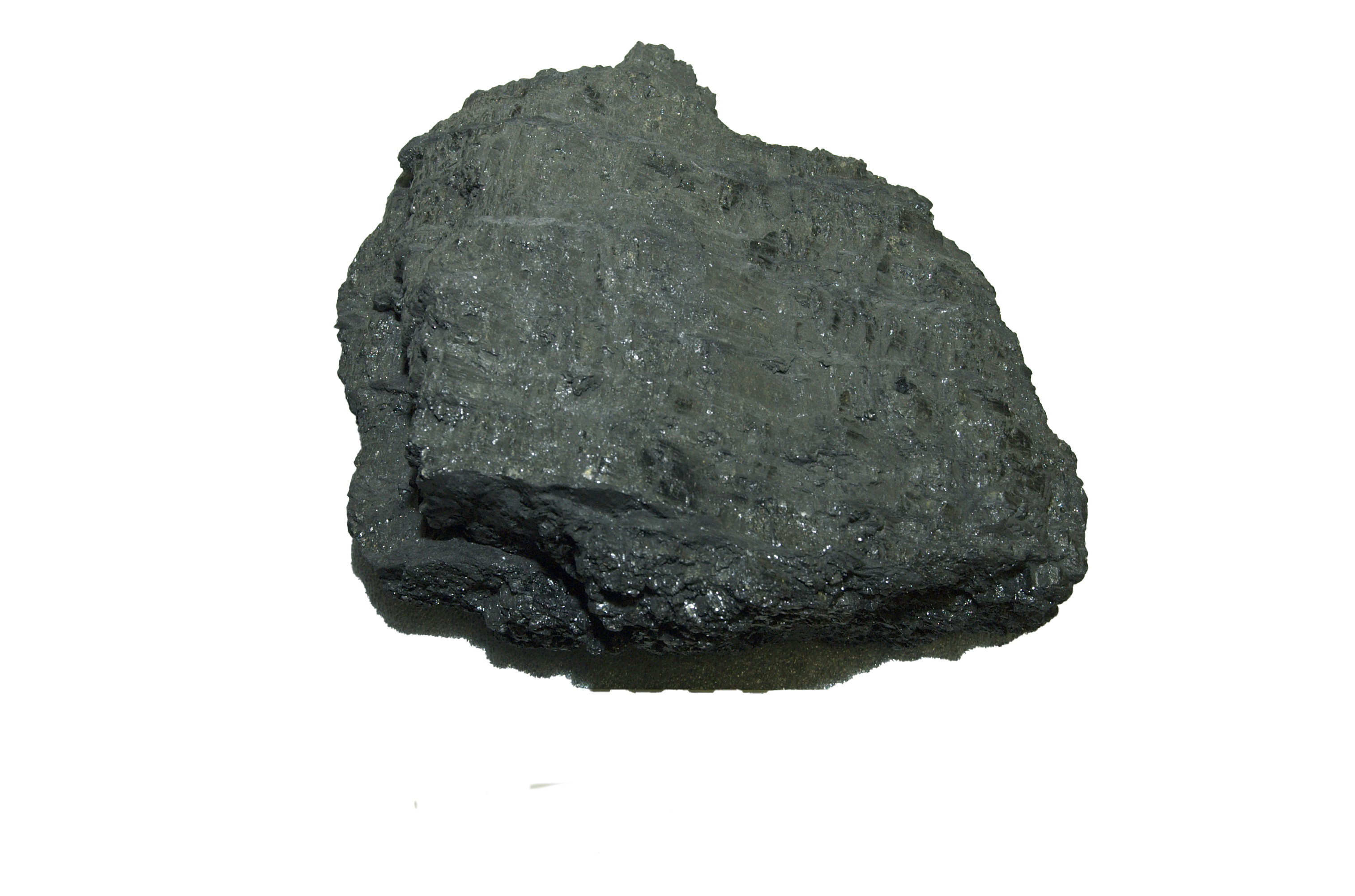
State Rock
Bituminous coal was declared the official State Rock of West Virginia when the Legislature adopted House Concurrent Resolution No. 37 on April 11, 2009. Britnee Gilbert, a senior at Gilbert High School in Mingo County, started the movement to adopt bituminous coal as the state rock.
Coal has been present and noted in the region now known as West Virginia since the early days of European exploration. In 1742, European explorer John Peter Salley first discovered the region's coal in the area of Racine. The coal deposit he observed was nearby a tributary of the Kanawha River, which he in turned named the Coal River. Over time, the coal industry evolved into an integral part of the state's economic and social fabric.
Learn more about West Virginia coal at e-WV: Coal, e-WV: Cannel Coal and e-WV: Coal Industry, and the WV Blue Book 2017-2018. To learn about all of the reasons bituminous coal was recognized as the State Rock of West Virginia, read the full text of HCR 37.
Did You Know?
West Virginia is the second largest bituminous coal producing state in the United States.
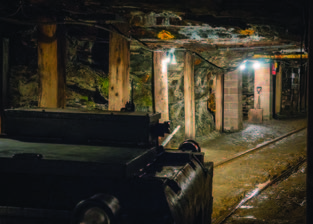
State Exhibition Coal Mine
Beckley's Exhibition Coal Mine was named official Exhibition Coal Mine on March 2, 2012.
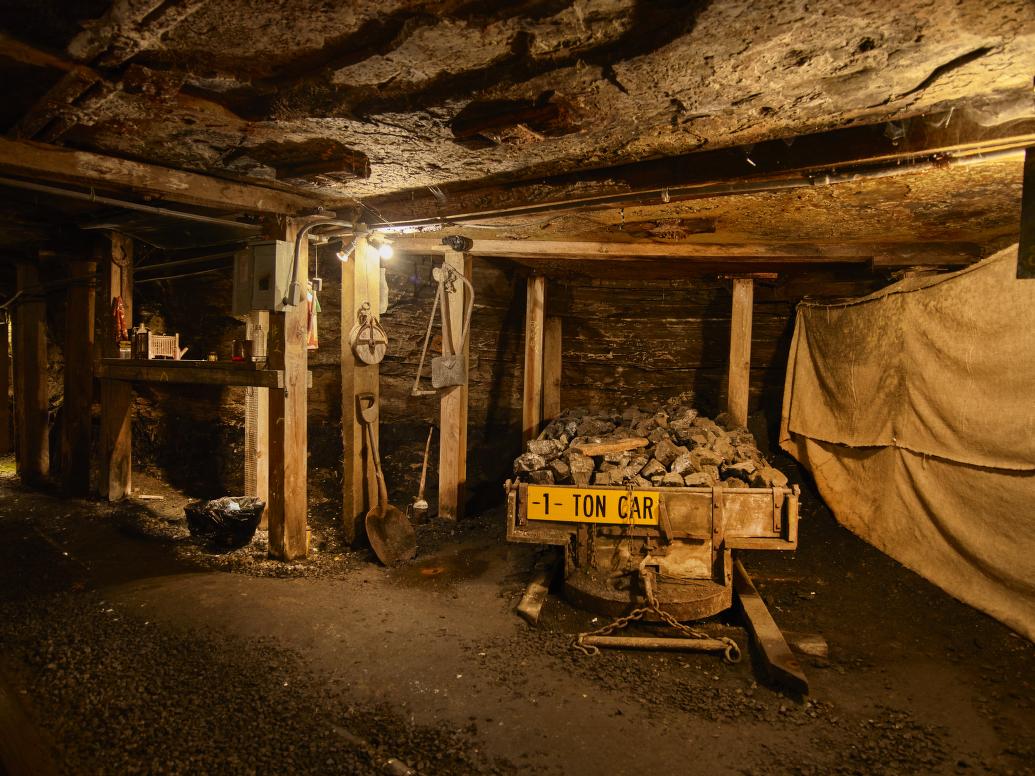
State Exhibition Coal Mine
The City of Beckley's Exhibition Coal Mine was named the official Exhibition Coal Mine of West Virginia by Committee Substitute for House Concurrent Resolution No. 68, which was adopted by the Legislature on March 2, 2012. The Beckley Exhibition Coal Mine is part of the New River Park and opened to visitors in 1962. Since opening, the mine has allowed over 45,000 visitors each year to ride authentic "man cars" through 1,500 feet of underground passages under the supervision of an experienced veteran coal miner. Visitors experience the history of low-seam coal mining from the days of hand-loading to the era of modern mechanization.
The mine offers recreational and educational opportunities for visitors through its Youth Museum of Southern West Virginia while providing an invaluable connection to the state's rich coal history. Activities include the hosting of a planetarium as well as seasonal exhibitions.
Learn more at City of Beckley: Exhibition Coal Mine, City of Beckley: Youth Museum, the WV Blue Book 2017-2018, or read the full text of Committee Substitute for HCR 68.
Did You Know?
The Beckley Exhibition Coal Mine is listed on the National Register of Historic Places.
State Gem
Silicified Lithostrotionella was named West Virginia's State Gem on March 10, 1990.
State Gem
Although technically not a gemstone, the adoption of House Concurrent Resolution No. 39 on March 10, 1990 named the State Gem as silicified Mississippian fossil coral Lithostrotionella, preserved by the mineral chalcedony. It is found in Hillsdale Limestone in portions of Greenbrier and Pocahontas counties and is often cut and polished for jewelry.
Learn more about Silicified Lithostrotionella at WVGES: West Virginia GeoFacts and the WV Blue Book 2017-2018.
Did You Know?
Lithostrotionella coral lived about 350-325 million years ago in the warm, shallow waters that covered much of North America during the Mississippian Period.
State Fossil
On March 8, 2008, the Jefferson's Ground Sloth was designated the State Fossil of West Virginia.
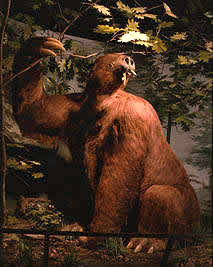
State Fossil
Jefferson's ground sloth (Megalonyx jeffersonii) became the State Fossil of West Virginia when the Legislature adopted Senate Concurrent Resolution No. 29 on March 8, 2008, which also named the Timber Rattlesnake as the State Reptile. In 1797, President Thomas Jefferson obtained and described fossil bones from a limestone cave in what is now Monroe County. Two years later, the same bones were described by Casper Wistar as the bones of a giant extinct ground sloth and were named in honor of President Jefferson. Named in order to promote the earth sciences and history of our region, the bones are from the Ice Age, or Pleistocene Epoch, which lasted from 10,000 to 1.8 million years ago. Additional Megalonyx fossils have been found in two Monroe County caves as well as caves in both Pendleton and Greenbrier Counties.
Learn more at WV Blue Book 2017-2018 and e-WV:Megalonyx jeffersonii or read the full text of SCR 29.
Did You Know?
Jefferson's ground sloth was an herbivore that stood more than eight feet tall and weighed over 1,000 pounds!
Additional Symbols

State Locomotive
On March 11, 2004, the Shay No. 5 steam locomotive at Cass Scenic Railroad was named State Locomotive.

State Locomotive
The Cass Scenic Railroad's Shay No. 5 steam locomotive was designated as the official steam locomotive of West Virginia when the Legislature adopted Senate Concurrent Resolution No. 24 on March 11, 2004. The legendary Shay No. 5 was built for the Greenbrier and Elk River Railroad by Lima Locomotive Works of Lima, Ohio. This turn-of-the-century class C-80 Shay has been toiling up Cheat Mountain since 1905. The Shay No. 5 was named as State Locomotive as a tribute to the history of timbering in West Virginia and as an important historical artifact and wonderfully preserved example of early 20th century technology.
Learn more at: WV Blue Book 2017-2018, Mountain Rail WV: Shay No. 5 and e-WV: Cass Scenic Railroad.
Did You Know?
The Shay No. 5 is one of the oldest engines in continuous service on its original line and the second oldest Shay in existence!

State Firearm
The Hall Flintlock Model 1819 became the State Firearm on April 4, 2013.

State Firearm
The Hall Flintlock Model 1819 was named the official State Firearm by the Legislature on April 4, 2013 with the adoption of Senate Concurrent Resolution No. 7. Originally manufactured in Harpers Ferry by John H. Hall, this model of rifle was adopted into the United States Army in 1819 and was the first breech-loading rifle to be adopted by nay nation's military. The Hall Flintlock Model 1819 is characterized by a block breech that has the ability to be lifted out, allowing the operator to insert the powder and bullet and creating a faster and simpler way to handle a gun. The Flintlock Model continued to be used during the United States Civil War. This alone makes it significant to West Virginia, as the state was born out of that armed conflict.
Learn more about the Hall Flintlock Model 1819 at e-WV: Harpers Ferry Armory and Arsenal and the WV Blue Book 2017-2018.
Did You Know?
The Hall Flintlock Model 1819 was the first entirely machine-made weapon ever manufactured with interchangeable parts.
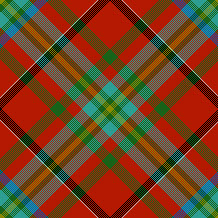
State Tartan
West Virginia adopted its State Tartan on March 6, 2008.

State Tartan
The adoption of House Concurrent Resolution No. 29 by the Legislature on March 6, 2008 designated the West Virginia Shawl as the official State Tartan. These woolen plaid cloths were originally worn to differentiate between Scottish clans and families. The pattern is based on a previously undiscovered shawl found at the Daughters of the American Revolution Museum in Barboursville. The official State Tartan includes colors that most fully represent the state's history, culture, and beauty in a symmetrical design. The following colors within the design each represent a different aspect of the state:
- Scarlet, for the State Bird
- Yellow, for fall colors
- Blue, for rivers and lakes
- Black, for the State Animal and the state's oil and coal resources
- Green, for the State Flower and the state's meadows
- Azure, for the sky
- White, to include all of the colors of the United States flag
Learn more about the State Tartan at WV Blue Book 2017-2018 and the full text of HCR 29 .
Did You Know?
Lithostrotionella coral lived about 350-325 million years ago in the warm, shallow waters that covered much of North America during the Mississippian Period.
* All information taken from the West Virginia Blue Book, Section 11: Departmental, Statistical & General Information and West Virginia Archive of Daily Journals